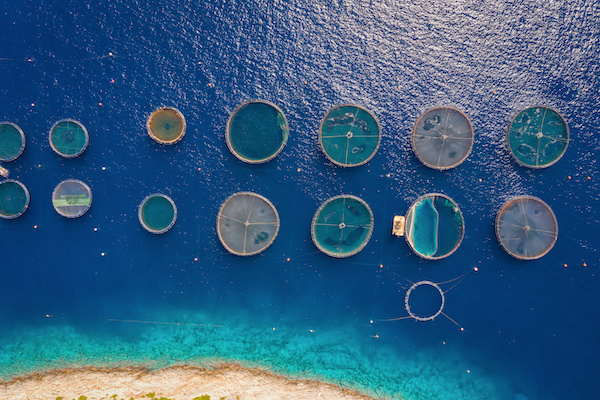Addressing Plastic Pollution From the Aquaculture Industry
Global Ghost Gear Initiative launches new guidance to prevent aquaculture gear loss

For billions of people across the world, seafood is a critical part of a healthy diet. While much of the fish that we eat still comes from wild caught “capture” fisheries, aquaculture—or fish farming—is becoming increasingly important. Globally, aquaculture supplies more than half of all seafood produced for human consumption, and that percentage is only expected to rise.
Oddly enough, this growth comes with more opportunity for plastic pollution. Plastic is used extensively in marine fish farming, including in fish cages, in coastal fishpond linings and in shellfish farming bags. In Ireland, for example, the smallest oyster grower raises the oysters in about 30,000 plastic bags per harvest, while others use 200,000 bags or more. That results in at least two million bags in use at any given time in this relatively small oyster farming industry. These plastics are easily lost through extreme weather events, mismanagement of waste or deliberate discharge.
We know the toll that plastic pollution takes on our ocean, and abandoned, lost or otherwise discarded fishing gear—or ghost gear—is particularly harmful. Ghost gear threatens marine ecosystems around the world, from shallow coral reefs to deep-water landscapes, and it is particularly deadly to all the incredible marine life that call the ocean home.
That’s why the Global Ghost Gear Initiative (GGGI) has launched a new Best Practice Framework for the Management of Aquaculture Gear (A-BPF).
The A-BPF is the first document of its kind and provides comprehensive guidance to aquaculture stakeholders on the best ways to prevent, remove and mitigate the effects of ghost gear. The framework covers a wide variety of aquaculture operations and sector participants across a global landscape.
To make this framework as effective as possible, the GGGI worked with Ocean Outcomes to conduct a robust consultation process with more than 150 priority stakeholders from 20 different countries. These conversations made it clear that that while plastic and other debris lost from aquaculture and capture fisheries are often considered together, the drivers and pathways are different, even if the eventual impacts are similar. In capture fisheries, fishing gear is either deliberately not retrieved, lost through unintended interaction with other gear or extreme weather or deliberately disposed of at sea. In aquaculture, the primary drivers are extreme weather, insufficient facilities or waste management and in some cases deliberate discard, particularly where waste management options are limited or nonexistent.
Since 2017, the GGGI has worked to implement the Best Practice Framework for the Management of Fishing Gear (C-BPF) for wild capture fisheries. We’re excited to begin working with aquaculture stakeholders to implement the A-BPF in that rapidly growing industry.